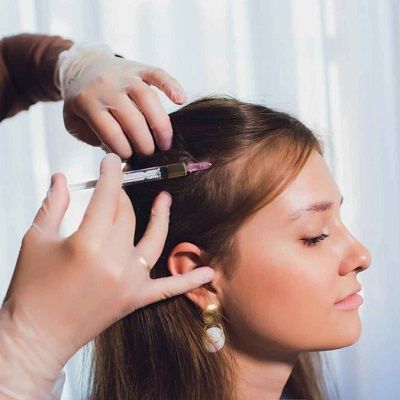Introduction
Platelet-Rich Plasma (PRP) hair treatment has emerged as a popular and non-invasive solution for addressing hair loss. Utilizing the body's own platelets, this therapy aims to stimulate hair growth and rejuvenate thinning hair. While PRP treatment is widely available for both men and women, the underlying causes of hair loss and the treatment’s effectiveness can vary between genders. This article explores the distinctions between PRP hair treatment for men and women at PRP Hair Treatment Clinic Oman, shedding light on the different factors influencing its success and providing insights into personalized treatment approaches.
Understanding PRP Hair Treatment
What is PRP Hair Treatment?
PRP hair treatment involves extracting a small amount of blood from the patient, processing it to concentrate the platelets, and then injecting this platelet-rich plasma into the scalp. Platelets contain growth factors that are believed to stimulate hair follicles, promote cell growth, and enhance blood circulation to the scalp. This process is intended to improve hair density, thickness, and overall quality.
The Procedure
- Blood Draw: A healthcare provider draws a small amount of blood from the patient’s arm.
- Processing: The blood is placed in a centrifuge to separate the platelets from other blood components.
- Injection: The concentrated platelets are injected into targeted areas of the scalp.
Hair Loss Causes and Patterns
Hair Loss in Men
Men typically experience androgenetic alopecia, commonly known as male pattern baldness. This condition is characterized by a receding hairline, thinning at the crown, and eventual bald spots. The primary cause is the sensitivity of hair follicles to dihydrotestosterone (DHT), a derivative of testosterone.
Hair Loss in Women
Women also experience androgenetic alopecia, but it generally manifests differently. Women often experience diffuse thinning across the entire scalp rather than distinct bald spots. Hormonal changes, such as those occurring during menopause or pregnancy, and medical conditions like polycystic ovary syndrome (PCOS) can contribute to female hair loss.
PRP Treatment Efficacy: Men vs. Women
Efficacy in Men
In men, PRP treatment can be particularly effective in addressing early to moderate stages of male pattern baldness. Studies suggest that men with well-defined areas of thinning or loss, rather than complete baldness, often see the best results. The success of PRP in men is partly attributed to the still-active hair follicles in these areas.
Efficacy in Women
For women, PRP treatment is generally effective in managing diffuse thinning rather than extensive baldness. Women with hormonal imbalances or medical conditions affecting hair growth may see improvements in hair density and thickness. However, the response to treatment can vary, and some women may require more sessions or additional therapies to achieve desired results.
Treatment Protocols and Considerations
Men
Men typically follow a treatment protocol involving three to four sessions spaced several weeks apart, with maintenance sessions every 6 to 12 months. Men should also consider combining PRP with other treatments like topical minoxidil or oral finasteride to enhance results.
Women
Women generally follow a similar treatment protocol as men, but the number of sessions and maintenance intervals may vary based on individual response. Hormonal evaluation and treatment might also be necessary for women to address underlying causes of hair loss.
Side Effects and Risks
Common Side Effects
Both men and women may experience mild side effects such as redness, swelling, or tenderness at the injection sites. These effects are typically temporary and resolve within a few days.
Rare Risks
Rare risks include infection, nerve damage, or allergic reactions. It is crucial to undergo PRP treatment with a qualified healthcare provider to minimize these risks.
Conclusion
PRP hair treatment offers a promising approach for combating hair loss, with its effectiveness varying based on gender-specific factors. While the core procedure remains the same, the underlying causes of hair loss and the resultant effectiveness of PRP can differ between men and women. Men generally benefit from PRP in the early to moderate stages of male pattern baldness, while women may find it more useful for managing diffuse thinning rather than complete baldness. Personalized treatment plans, potentially combining PRP with other therapies, can optimize outcomes for both men and women. As with any medical treatment, consulting with a qualified specialist to tailor the approach to individual needs is essential for achieving the best possible results.
